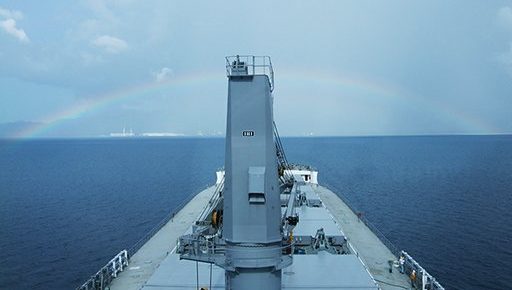No end in sight as S&P volumes set new records

News carried on Splash yesterday that 2017 is set to be a record year in terms of the volume of secondhand ship sales has got analysts and brokers alike talking about a renewed sense of optimism among shipowners within dry bulk and container shipping.
According to statistics from Clarkson Research the first eight months of 2017 saw 1,092 sales reported, of 64.4m dwt. If this pace is maintained through the final part of the year, then the annual total will surpass the totals of 84.4m dwt recorded in 2014 and the 83.5m dwt seen in 2007.
Some are actually anticipating the pace of sales to pick up between now and the end of the year.
Martin Rowe, who heads up Clarksons Platou’s operations in Hong Kong, told Splash that bulker buys were still cheap, despite soaring in price so far this year.
“Prices for bulkers are still restrained,” he said, noting that the Bulker S&P Index, which Clarksons Research initiated in 2002 with an index of 100, is still trading below 100.
“At this point in the cycle one might normally expect a significantly higher index figure such as 130 or even 150 points,” he said, before pointing out that the lack of traditional ship finance from the market means that secondhand purchases today have for the most part to be made unleveraged, which is holding prices back.
Dr Adam Kent, a director at consultants Maritime Strategies International, picked out canny asset players as driving sales volumes this year.
“The added attraction,” he observed, “for older vessels is that purchase prices, in many cases, are only marginally above scrap price. Consequently, the downside risk becomes one relating to steel price rather than shipping markets, whereas the upside potential could be multiples of the current purchase price.”
Additionally, Kent pointed out there has been a number of banks not just selling off chunks of their portfolios but drip feeding individual or small groups of vessels onto the S&P market.
“These vessels have not always been priced at market levels, either to encourage a quick sale or the vessels have been auctioned off to the highest bidder and in today’s market there are a wealth of bidders and buyers,” Kent said.
“Shipowners are by default optimists,” commented Frans van de Bospoort, managing director of ship finance in the eastern hemisphere for DVB Bank, on hearing the S&P record breaking news.
Quite so, concurred Panagiotis Patsadas from brokers Target Maritime Transport.
“Shipping is no doubt a sentiment driven market, fundamentals aside,” Patsadas said, adding: “Record secondhand sales is certainly a reason to be optimistic, provided it doesn’t lead to an eventual spree of newbuilding orders. Increased demand for prompt tonnage suggests that the market has bottomed already and industry players are rushing to ride the much anticipated recovery wave. So long as this gives a lifeline to previously obsolete 10 year old vessels, and doesn’t trigger irrational newbuilding activity, the future certainly looks brighter.”
Fred Cheng, a near constant in broking reports this year, linked to a string of capesize acqusitions, reckons uncertainty, not hope, is actually driving many of the sales seen in dry bulk this year.
“While the spread between sellers and buyers are still wide apart, deals are being done because some sellers have many units and think it’s better to hedge and sell some at what is already much higher prices than the bottom,” Cheng, the head of Hong Kong’s Shinyo International, told Splash. “As the rise in prices is more for older ships rather than younger ships in percentage terms, some are taking the opportunity to sell old and buy young. Others are just doing a quick buy cheap and sell high. Still others, such as banks, are just relieved they can exit without taking a huge hit,” Cheng concluded.
